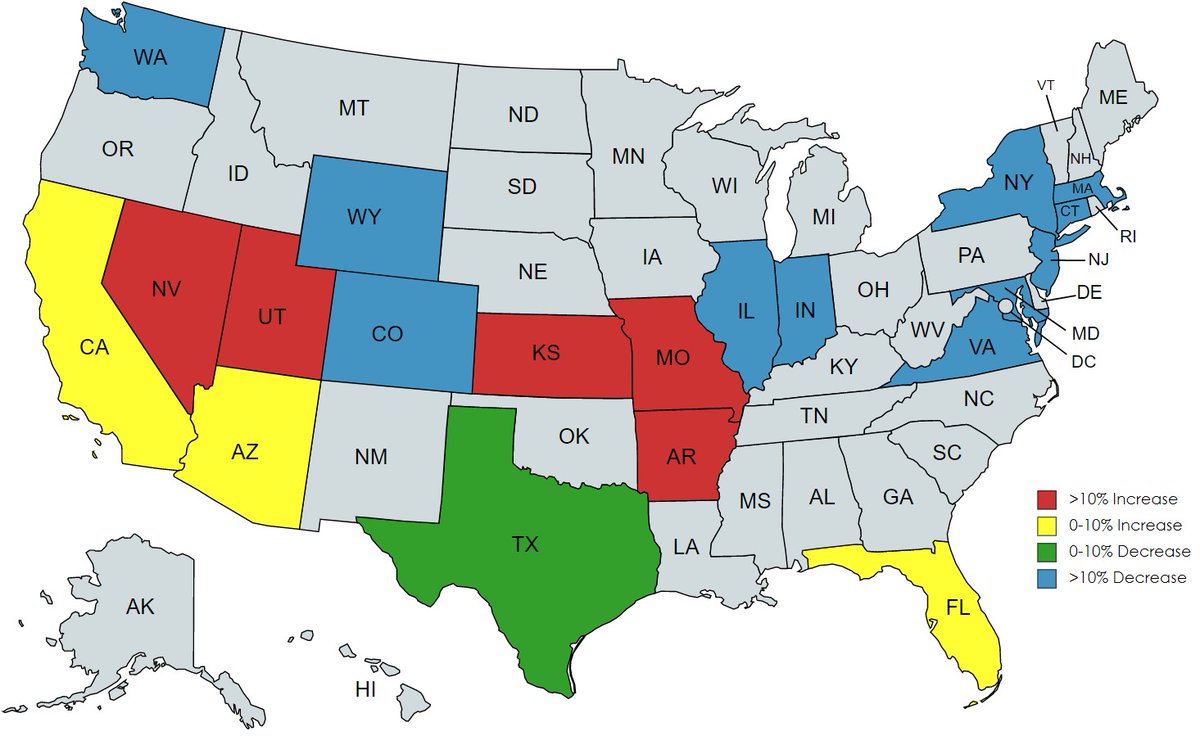
I wanted to take a look at the trend in hospitalization census in states that are now predominantly #DeltaVariant according to the graphic below (including FL & IL, which are close). I'll do some comparisons to Alpha back in April as well.
🧵Thread🧵
🧵Thread🧵

First, here is a map of the 2-week change in 7-day-average hospitalization census for each of the states above (according to state dashboards as of yesterday's data, compared to the average on Friday 2 weeks prior): 

At a glance, low vax states tend to be doing the worst, which makes intuitive sense (though we're discounting prior infection by looking only at vax status, of course). But there are outliers. For example, why should IN be on a better trajectory than CA?
And why aren't low-vax counties in NY (for example) doing worse than high-vax counties in CA? Delta's likely predominant in both.
For example, 0 of the 29 NY counties that are *below 50%* fully vaxxed show a 2-week rise in average hospitalization census. None. But in CA...
For example, 0 of the 29 NY counties that are *below 50%* fully vaxxed show a 2-week rise in average hospitalization census. None. But in CA...
8 out of the 15 CA counties that are *above 50%* vaxxed show a 2-week increase in the average hospitalization census. That strikes me as odd if the equation is simply Delta + Low Vax = Trouble. Clearly other factors are at play.
(County data from @nytimes as of today)
(County data from @nytimes as of today)
Population density? Certainly makes some sense. But of course, the spread of Delta in the mid-South, lower heartland, and West is moving through lower-density population areas without much issue right now.
I still can't help but feel the southern latitude is at least a material factor. And one primary reason that makes some sense is when you look at the map of hospitalization change in mid-April when the #AlphaVariant became dominant. Let's take a look: 

Vaccination percentages were lower across-the-board in April, of course, but the states doing the best and worse in terms of vaccination percentages pretty much map onto the states doing the best and worst right now.
Why was the eastern seaboard and Midwest essentially the mirror image of right now (NY excepted), despite generally being among the most vaxxed? Those states in green were all among the bottom half of vaccination percentage. How'd they avoid getting smacked with Alpha (a la MI)?
I don't have all the answers, but I sure hope that smart folks are looking for them. Imagine if pandemic response in 20 years could be on a micro-regional basis based on predicted spread in case we need to preemptively coordinate for care in certain locales.
I just don't want the upshot of the last 18 months to be: distancing, masking, and vaccination are the sole drivers of Covid and nothing else is worth the time or effort.
• • •
Missing some Tweet in this thread? You can try to
force a refresh






